ITALIAN SQUARES
PLACES OF BELONGING
If you have ever visited an Italian city, you must have noticed that there is one main place where all life gravitates. More evidently, in small towns, you might have realized that people gather in a specific center that, like a strong beating heart, pumps life into the vessels of the place and, at the same time, attracts the best energy and provides the backdrop for the most crucial activities.
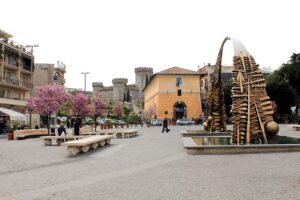
To understand the vibes of a place, any visitor should take a refreshing break after their cultural walk or historical exploration at that destination and quietly observe what is happening around them. Many dynamics will appear, and many of their protagonists will be revealed.
You will suddenly see a friendly hand gesture, apparently solitary, strongly connecting with another individual across the street like an invisible, and yet solid, bridge. Others might move closer to warmly hug and greet each other as relatives would, even if they are not.
This informal meeting point is where the social interactions are based and it is also an open-air news center where everyone keeps up to date about relevant local affairs.
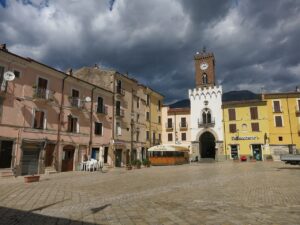
The expression “Ci vediamo dopo in piazza” (see you later in the square), heard often among the locals, reaffirms their sense of belonging. It also confirms that each town has the one and only official “living room” for the extended family that the local community is part of.
SQUARES THROUGH TIME
A vital center of city life, Italian squares have always been the most important place for citizens to meet and do business. Since Roman times, they have played an active role in the history of a place, including not only commercial functions but also religious and political ones.
It would be no surprise then to learn that towns and cities of the late Middle Ages started to build separate squares in urban planning to recognize the different roles that the squares played. For this reason, many towns have several squares, one for each function. The Cathedral Square (la piazza della cattedrale), the Municipality Square (la piazza del Comune), and sometimes even the Market Square (la piazza del mercato). But this was only a later adjustment, an evolution from its original role.
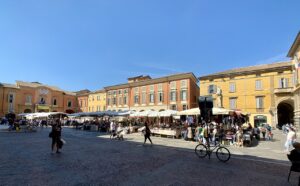
The Middle Ages became the golden period for the square. From the year AD 1,000, in particular, medieval towns, within their protective walls, organized their life around this single space where all the local powers converged. In the towns that still retain their original urban structure, the symbols of those powers are all located in the same place: the church as well as the house of the local “mayor” of that time.
A peculiar feature of this square is that it is an enclosed place, where only small streets and alleys converge. Many major Italian cities have seen their map changed over different historical periods and, particularly with modernization and the arrival of cars, the sacred and secluded space of the square has sometimes been opened up with the consequent loss of intimacy and closeness. Thet feeling, however, can still be felt in the Borghi (villages), which have proudly kept their heritage until today.

BEYOND THE USUAL BIG NAMES
Charmed by the images of most tourist destinations in Italy, we yearn to visit and immerse ourselves in the magic of their architecture and romantic settings that have become so familiar through today’s communication channels.
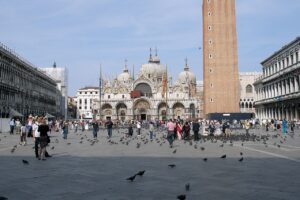
We are very familiar with the beauty of the squares in cities like Venice – with the rich and elegant Piazza San Marco (Saint Mark’s Square); and Milan – with the huge Piazza del Duomo (Cathedral Square); or Rome – with the venerated Piazza San Pietro (Saint Peter’s Square), which is strictly part of a different state, the Vatican City, or with the beautiful Piazza Navona (Navona Square) in the historical center of the Eternal City.
These and other well-known big city squares have many stories to tell and have travelled through time and history, however, most of them have arrived in the present day quite transformed. Our Bel Paese (beautiful country), though, also offers much smaller and more unchanged original centers which, not surprisingly, have become iconic destinations for foreign travelers.

Two classic examples are Vernazza in the Cinque Terre, with its pretty sea-facing square surrounded by a colorful backdrop of picturesque buildings; and Ravello on the Amalfi coast, an alternative destination to avoid the crowded Amalfi and Positano, with its peaceful Piazza del Duomo where a church with a plain white façade is located, hiding unique marble artworks inside.
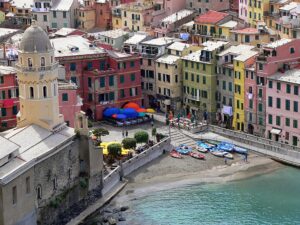
FOCUSING ON THE SMALL ONES
Although we recognize the appeal that the most famous destinations bring to fuel the desires of the international tourists, we at Storywalking have committed to supporting the visibility of the small towns to contribute to local development in a more sustainable way.
Expanding the list of places that the average tourist dreams of visiting in Italy, by including daily tours and immersive experiences in our precious villages, is part of our daily commitment to promoting the variety of scenery, culture and historical traditions that our country offers.
Together, let’s explore some of the more unnoticed squares in our land, by region.
IN EMILIA-ROMAGNA
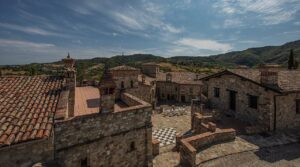
Votigno di Canossa, the small and geographically hidden Medieval borgo (village) close to Parma, is all built of stone and it has a fascinating story, which I invite you to research. Its cozy square was visited by the Dalai Lama in 1999 because this was the first town in Europe to host a Buddhist monastery.
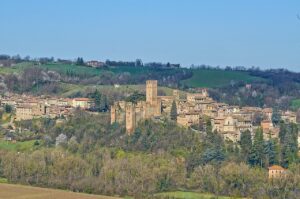
Castell’Arquato (Italian for Arched Castle), located in Piacenza province, is considered to be one of the most beautiful villages in Italy. Its monumental square, located at the highest point of the hill, includes the most important historical buildings in the town: the Rocca Viscontea (a tower of Roman origin used for military purposes), the Palazzo del Podestà (the house of the local “mayor”), and the Collegiate of Santa Maria Assunta.
IN TUSCANY
The province of Siena has one of the most famous and beautiful squares in Italy, where we have been in the past for the picturesque annual horse ride, but there are two other pretty squares we believe deserve your attention.
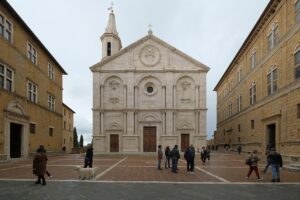
In Pienza, close to Montepulciano, the hilly town surrounded by vineyards and famous for the traditional Italian red wine with the same name, we can enjoy the trapezoidal Piazza Pio II.
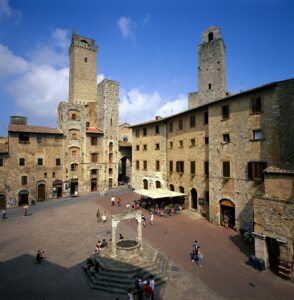
San Gimignano is situated in the southeastern part of the province of Siena, on the Via Francigena, which was used by pilgrims to travel from Canterbury to the sacred city of Rome. The Romanesque church’s stone staircase, the Salvucci family twin towers, the Old Mayor’s Palace and the New Palace dominate the Duomo Square.
IN UMBRIA
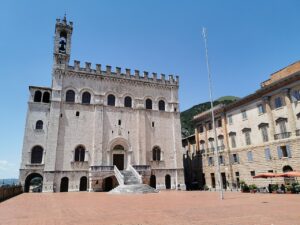
In the so-called green heart of Italy, we find two evocative squares. The Piazza Grande, in Gubbio, offers a spectacular view of the city and the surrounding countryside, due to being elevated and open on one side. This square is one of the most successful medieval urban plans ever completed and is one of the largest hanging squares ever built.
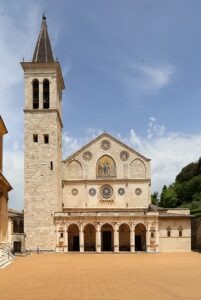
Spoleto’s Duomo Square, on the other hand, presents a unique triangular shape that leads visitors via the long staircase that descends towards the church, whose façade is adorned by a mosaic. Inside, works of the Italian Renaissance painter Pinturicchio can be admired.
IN PUGLIA
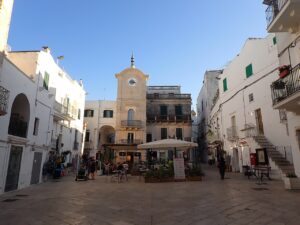
We would like to conclude this short journey through the most memorable Italian squares with Cisternino (small tank, in English), located ten miles west of Ostuni. The small Vittorio Emanuele, the 3rd Square, is surrounded by whitestone buildings and the clock tower, thanks to which it is also known as “Clock Square”. A maze of narrow alleyways radiates from here and runs through the old town.
SPONTANEOUS CATWALK
The square, however, is not only a testament to the town’s history but also a mirror of its inhabitants and their spirit.
The Italian Piazza, in fact, also plays the more frivolous role of an unofficial catwalk, responding both to the Italian’s innate voyeuristic needs, as well as the need to show off one’s latest outfit or haircut and take pride in modelling under the watchful eyes of their neighbors.
This is also the best place for you to enjoy a refreshing summer cocktail or aperitif on a summer evening, before having dinner and then once again joining in and continuing to be part of the entertaining live ‘show’.
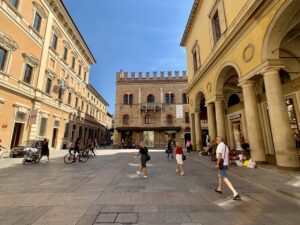
If you are staying long enough, you will soon be able to identify who the main characters are in the square, and they might even come up to you and start an enjoyable and friendly chat.
After all, you are the visitor and this is their courtyard.
Words by Elisa Spampinato
Cover image: Trento (Photo credits @Diego Delso – Wikimedia Commons)


